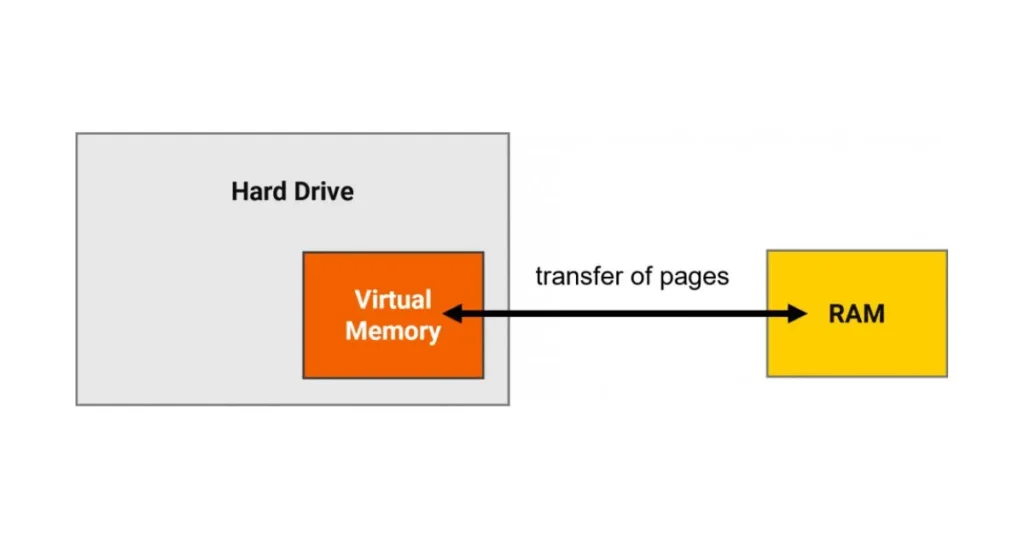
Virtual RAM in Android phones refers to the ability of a device to increase its effective RAM capacity by utilizing a portion of its internal storage as virtual memory. This concept is similar to the swap space or paging file used in desktop operating systems like Windows or Linux, where part of the hard drive is used to extend the physical RAM.
How Virtual RAM Works
- Virtual Memory Allocation: The phone’s operating system allocates a portion of the internal storage to function as additional RAM. This virtual memory can be used to store inactive data from the RAM, freeing up actual RAM for active processes.
- Swapping: When the physical RAM is fully utilized, the system moves less frequently used data to the virtual memory (the allocated storage space). This process is known as swapping.
- Seamless Management: The OS manages this virtual memory dynamically, ensuring that the transition between physical and virtual memory is smooth and does not significantly impact the user experience.
Benefits of Virtual RAM
- Improved Multitasking: With expandable RAM, devices can handle more applications running simultaneously without slowing down, as there is more memory available to keep apps open in the background.
- Enhanced Performance: Users experience fewer slowdowns and stutters when switching between apps, as the system has more memory resources to allocate to running applications.
- Cost-Effective: Manufacturers can offer better multitasking and performance on devices with lower physical RAM by utilizing expandable RAM, potentially reducing the cost of the device.
Limitations and Considerations
- Speed Difference: Internal storage is generally slower than actual RAM. While Virtual RAM can improve multitasking, it might not be as fast as having more physical RAM.
- Storage Usage: Using part of the internal storage as virtual RAM reduces the available storage space for other data, such as apps, photos, and videos.
- Wear and Tear: Frequent read/write operations on the internal storage can lead to faster wear and tear, potentially shortening the lifespan of the storage medium.
Implementation in Android Phones
Some Android manufacturers have started implementing Virtual RAM features in their devices. This feature is typically found in mid-range and budget smartphones where the physical RAM is limited. Users can often enable or configure expandable RAM through the device’s settings menu, although the exact process and availability can vary by manufacturer and model.
Examples
- Samsung: Samsung’s “RAM Plus” feature allows users to expand their device’s RAM by allocating a portion of the internal storage.
- Xiaomi: Xiaomi offers a similar feature in its MIUI, allowing users to increase the RAM capacity through virtual memory.
Conclusion
Virtual RAM in Android phones is an innovative solution to enhance device performance and multitasking capabilities by utilizing part of the internal storage as additional memory. While it has some limitations compared to physical RAM, it offers a practical way to improve user experience on devices with constrained hardware resources. As the technology continues to evolve, it is likely to become a standard feature in more Android smartphones, providing users with smoother and more efficient performance.





Leave a Reply